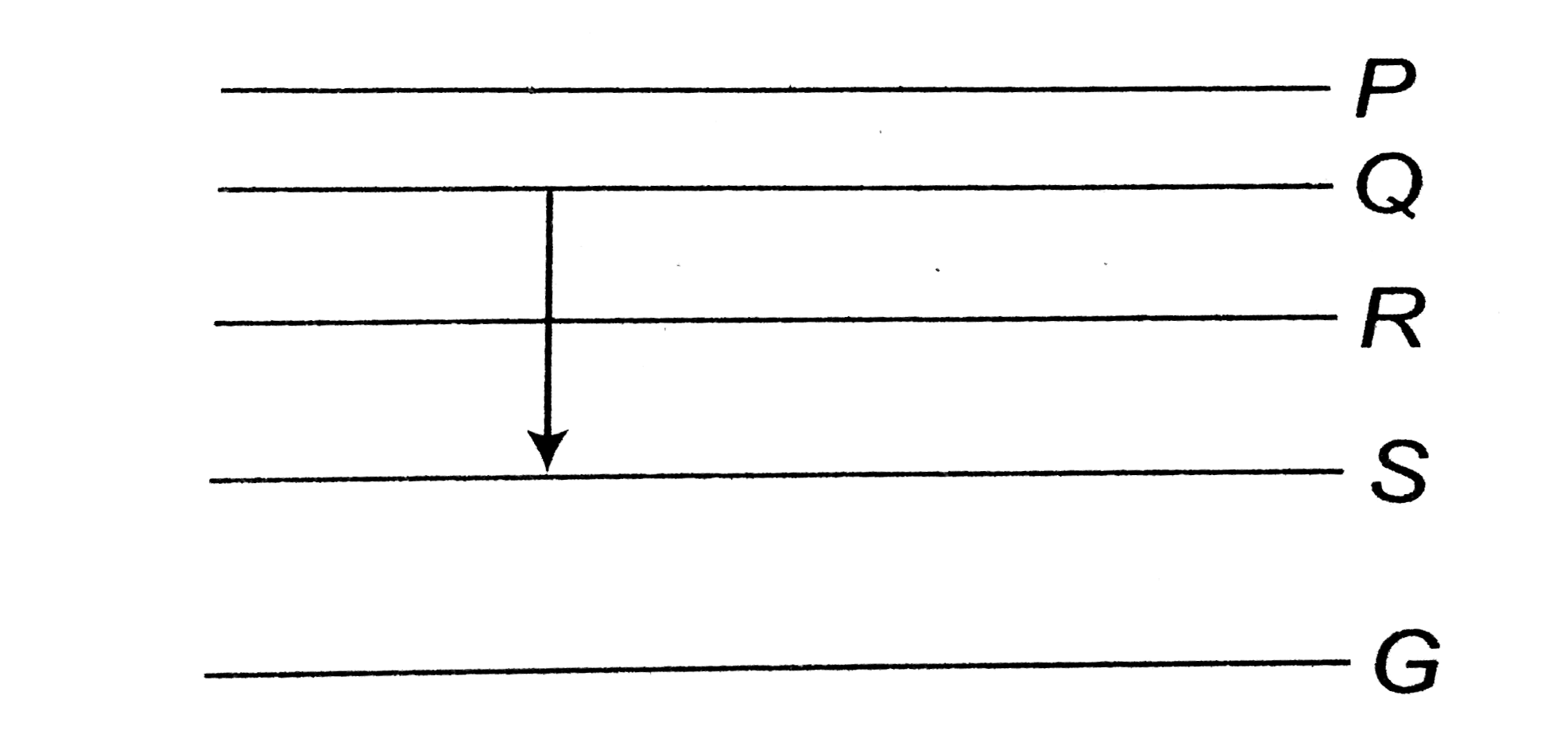Complete Solutions to Taking it together of chapter ATOMS of Class 12 book with complete answers and questions
| Class 12 | PHYSICS |
| Chapter | ATOMS |
| DC PANDEY NEET | Taking it together |
| Number Of Questions | 100 |
| Academic Year | 2023-24 |
Increase in which of the following increases the penetrating power of the X-rays ?
View Solution`X`-rays are not used for radar purooses, because they are not,
View SolutionThe X- rays beam coming from an X- rays tube will be
View SolutionConsider a photon of continuous X-ray coming from a Coolidge tube. Its energy comes from
View SolutionHydrogen atom does not emit X-rays because
View SolutionMoseley's law for characteristic X-rays is `sqrt v = a(Z-b)`. In this,
View SolutionA set of atoms in an excited state decays
View SolutionX-ray beam can be deflected
View SolutionIn an `X` - rays tube , the intensity of the emitted `X` - rays beam is increased by
View SolutionIf the current in the circuit for heating the filament is increased, the cutoff wavelength
View Solution`X`-rays are produced by jumping of:
View SolutionThe difference in angular momentum associated with electron in two successive orbits of hydrogen atom is:
View SolutionChoose the incorrect statement regarding the Bohr model of the hydrogen atom
View SolutionWhich of the following parameters are the same for all hydrogen like atoms and ions in their ground state?
View SolutionThe second line in Paschen series is obtained when the electron makes transition from
View SolutionAn electron moves in a circular orbit at a distance from a proton with kinetic energy, E, to escape to infinity, the minimum energy which must be supplied to the electron is
View SolutionMolybdenum is used as a target element for production of `X` - rays because it is
View SolutionAn X-ray has a wavelength of 0.010 Å. Its momentum is
View SolutionX-rays of `lamda = 1Å` have frequency
View SolutionThe simple Bohr model cannot be directly applied to calculate the energy level of an atom with many electrons . This is because.
View SolutionThe velocity of an electron in the first orbit of `H` atom is v. The velocity of an electron in the 2nd orbit of `He^+` atom.
View SolutionA X-ray tube operates at an accelerating potntial of 20 kV. Which of the following wavelength will be absent in the continuous spectrum of X-rays ?
View SolutionA metal block is exposed to beams of X-rays of different wavelength. X-rays of which wavelength penetrate most
View Solution`O_2` molecule consists of two oxygen atoms. In the molecule, nuclear force between the nuclei of the two atoms
View SolutionThe patient is asked to drink `BaSO_(4)` for examining the stomach by X-rays because X-rays are-
View SolutionThe orbital angular momentum of electron in the `n_(1)th` shell of element of atomic number `Z_(1) is L_(1)` an the same in the `n_(2)th` shell of element of atomic number `Z_(2) is L_(2)` If `L_(2)gtL_(1)` then
View SolutionFor production of characteristic `K_(beta) X - rays` , the electron transition is
View SolutionHydrogen atom is exited from ground state to another state with principal quantum number equal to `4` Then the number of spectral line in the emission spectra will be
View SolutionConsider the following two statements A and B and identify the correct choice in the given answer
A : The characteristic X-ray spectrum depends on the nature of the material of the target
B : The short wavelength limit of continuous X-ray spectrum varies inversely with the potential difference applied to the X-rays tube
View SolutionIn a hypotherical Bohr hydrogen, the mass of the electron is doubled. The energy `E_(0)` and the radius `r_(0)` of the first orbit will be (`a_(0)` is the Bohr radius)
View SolutionIonization energy of a hydrogen-like ion A is greater than that of another hydrogen like ion B . Let r, u, E and L represent the radius of the orbit , speed of the electron , total energy of the electron and angular momentum of the electron respectively (for the same n ). In ground state :
View SolutionIf `omega` the angular speed of electron in the nth orbit hydrogen atom, then
View SolutionHydrogen atom emits blue light when it changes from `n = 4` energy level to the `n = 2` level. Which colour of light would te atom emit when it changes from the `n = 5` level to the `n = 2` level ?
View SolutionThe potential difference between the cathode. And the target electrod in a coolidge tube is 24.75 kV. The minimum wavelength of the emitted X-rays is
View SolutionIn Rutherford scattering experiment, wha will be the ratio of impact parameter for scattering angles `theta_(1)=90^(@) and theta_(2)=120^(@)`
View SolutionTaking the Bohr radius `a_(0) = 53` pm, the radius of `Li^(++)` ion in its ground state, on the basis of Bohr's model, will be about.
View SolutionAn electron jumps from the `4th` orbit to the `2nd` orbit of hydrogen atom. Given the Rydberg's constant `R = 10^(5) cm^(-1)`. The frequency in `Hz` of the emitted radiation will be
View SolutionWhen an electron in hydrogen atom is excited, from its `4`th to `5`th stationary orbit, the change in angular momentum of electron is (Planck's constant: `h = 6.6 xx 10^(-34) J-s`)
View SolutionThe magntic moment `(mu)` of a revolving electron around the mucleaus varies with principle quantum number `n` as
View SolutionThe electron in a hydrogen atom makes a transition from `n=n_(1)` to `n=n_(2)` state. The time period of the electron in the initial state `(n_(1))` is eight times that in the final state `(n_(2))`. The possible values of `n_(1)` and `n_(2)` are
View SolutionTwo elements A and B with atomic numbers `Z_(A)` and `Z_(B)` are used to produce charateristic X-rays with frequencies `v_(A)` and `v_(B)` respectively. If `Z_(A):Z_(B)=1:2,` then `v_(A):v_(B)` will be
View SolutionAn electron revolves round a nucleus of charge Ze. In order to excite the electron from the `n=20` to `n=3`, the energy required is `47.2 eV`. Z is equal to
View SolutionAs per the Bohr model, the minimum energy (in eV) required to remove an electron from ground state of doubly ionized Li atom `(Z = 3)` is
View SolutionExcitation energy of a hydrogen like ion in its first excitation state is 40.8 eV. Energy needed to remove the electron from the ion in gruond state is
View SolutionIonization potential of hydrogen atom is `13.6 V`. Hydrogen atoms in the ground state are excited by monochromatic radiation of photon energy `12.1 eV`. The spectral lines emitted by hydrogen atoms according to Bohr's theory will be
View SolutionAn electron makes a transition from orbit `n = 4` to the orbit `n = 2` of a hydrogen atom. The wave number of the emitted radiations `(R =` Rydberg's constant) will be
View SolutionThe `K_(alpha)andK_(beta)` lines of charateristic X-ray spectrum of molybdenum are `0.76 overset(@)A and 0.64overset(@)A`, respectively. The wavelength of `L_(alpha)` line is
View SolutionThe longest wavelength that can be analysed by a sodium chloride crystal of spacing `d = 2.82 Å` in the second order is -
View SolutionThe wavelengths of `K_alpha` X-rays from lead isotopes `Pb^(204) , Pb^(206) and Pb^(208)` are `lambda_1, lambda_2 and lambda_3` respectively. Choose the correct alternative.
View SolutionThe graph between the square root of the frequency of a specific line of characteristic spectrum of `X` - rays and the atomic number of the target will be
View SolutionThe ratio between acceleration of the electron in singlely ionized helium atom and doublely ionized lithium atom (both in ground state) is (x/27). Find value of x.
View SolutionMagnetic moment of an electron in nth orbit of hydrogen atom is
View SolutionA sphere of work function `phi=4.6 eV` is suspended in a vacuum number by an insulating thread. Radiation of wavelength `lambda =0.2 mum` stricke on the sphere. The maximum electric pontential of the sphere will be
View SolutionThe wavelength of radiation emitted is `lambda_(0)` when an electron jumps from the third to second orbit of hydrogen atom. For the electron jumping from the fourth to the second orbit of the hydrogen atom, the wavelength of radiation emitted will be
View SolutionHard X-ray for the study of fractures in bones should have a minimum wavelength of `10^(-11)` m. the accelerating voltage for electrons in X-ray machine should be
View SolutionAn electron with kinetic energy `5eV` is incident on a hydrogen atom in its ground state.The collision
View SolutionAn electron makes a transition from orbit n=4 to the orbit n=2 of a hydrogen atom. The wave number of the emitted radiations (R=Rydberg's constant) will be
View SolutionThe minimum energy to ionize an atom is the energy required to
View SolutionLet `v_(1)` be the frequency of the series limit of the Lyman series, `v_(2)` be the frequency of the first line of the Lyman series, and `v_(3)` be the frequency of the series limit of the Balmer series. Then
View SolutionThe shortest wavelength of the Brackett series of a hydrogen-like atom (atomic number of `Z` ) is the same as the shortest wavelength of the Balmer series of hydrogen atom. The value of `z` is
View SolutionWhen an `alpha`-particle of mass `m` moving with velocity `v` bombards on heavy nucleus of charge `Ze`, its distance of closest approach from the nucleus depends on `m` as
View SolutionThe energy of an electron in excited hydrogen atom is -3.4 eV . Then, according to Bohr's therory, the angular momentum of the electron of the electron is
View SolutionThe shortest wavelength which can be obtained in hydrogen spectrum `(R=10 ^(7) m^(-1))`
View SolutionThe wavelength of th first spectral line of sodium 5896 Å . The fisrt excitation potential of sodium atomm will be (Planck's constant `h=6.63xx10^(-34) J-s)`
View SolutionThe shortest wavelength in Lyman series is 91.2 nm. The longest wavelength of the series is
View SolutionEnergy of 24.6 eV is required to remove one of the electron from a neutral helium atom. The energy (in eV) required to remove both electrons from a neutral helium atom is
View SolutionIf the radius of firs Bohr's orbit is x, then de-Broglie wavelenght of electron in 3rd orbit is nearly `(npix)` Find value of n
View SolutionAn excited hydrogen atom emits a photon of wavelength `lambda` in returning to the ground state. If 'R' is the Rydberg's constant, then the quantum number 'n' of the excited state is:
View SolutionAn alpha nucleus of energy `(1)/(2)mv^(2)` bomobards a heavy nuclear target of charge Ze. Then the distance of closest approach for the alpha nucleus will be proportional to
View Solutionif the frequency of `K_a` X-ray emitted from the element with atomic number 31 is f, then the frequency of `K_a` x-ray emitted from the element with atomic number 51 would be
View SolutionAccording to Moseley's law, the ratio of the slope of graph between `sqrtf` and Z for `K_beta` and `K_alpha` is
View SolutionThe ratio of the speed of the electrons in the ground state of hydrotgen to the speed of light in vacuum is
View SolutionIf scattering particles are `56` for `90^(@)` angle than this will be at `60^(@)` angle
View Solutionde-Broglie wavelength of an electron in the nth Bohr orbit is `lambda_(n)` and the angular momentum is `J_(n)` then
View SolutionIn hydrogen atom, electron makes transition from `n = 4` to `n = 1` level. Recoil momentum of the `H` atom will be
a.`13.6xx10^(-19) kg ms^(-1)` b.`6.8xx10^(-27) kg ms^(-1)`
c.`12.75xx10^(-24) kg ms^(-1)` d.None of these
View SolutionThe radius of hydrogen atom in its ground state is `5.3xx10^(-11)m`. After collision with an electron it is found to have a radius of `21.2xx10^(-11)m`. What is the principal quantum number n of the final state of atom ?
View SolutionThe acceleration of electron in the first orbits of hydrogen atom is
View SolutionAn `alpha`-particle accelerated through V volt is fired towards a nucleus . Its distance of closest approach is r. If a proton acceleration throught the same potential is fired towards the same nucleus, the distance of closest approach of proton will be xr. Find value of x.
View SolutionIn a Rutherford scattering experiment when a projectile of charge Z1 and mass M1 approaches a target nucleus of charge Z2 and mass M2, the distance of closest approach is r0. The energy of the projectile is :
View SolutionIn the Bohr model of a hydrogen atom, the centripetal force is furnished by the coulomb attraction between the proton and the electron. If `a_(0)` is the radius of the ground state orbit, m is the mass and e is the chargeon the electron and `varepsilon_(0)` is the vacuum permittivity,the speed of the electron is
View SolutionFor the first member of Balmer series of hydrogen spectrum, the wavelength is `lamda`. What is the wavelength of the second member?
a.`(27)/(20) lambda` b.`(20)/(27)lambda` c.`(27)/(10) lambda` d.None of these
View SolutionThe diagram shown the path of four `alpha`-particles of the same energy being scattered by the nucleus of an atom simutaneously. Which of these are/is not physically possible ?

View SolutionIn a hydrogen atom, the binding energy of the electron in the ground state is `E_(1)` then the frequency of revolution of the electron in the nth orbit is
View SolutionThe ratio of the wavelengths for `2 rarr 1` transition in `Li^(++), He^(+)` and `H` is
View SolutionThe electron in a hydrogen atom makes a transition from M shell to L-shell. The ratio of magnitude of initial to final acceleration of the electron is
View SolutionIf the wavelength of the first line of the Blamer series of hydrogen atom is `6561Å` , the wavelength of the second line of the series should be
a.13122Å b.3280Å c.4860Å d.2187Å
View SolutionIf the wavelength of the first member of Balmer series of hydrogen spectrum is 6563Å , then the wavelength of second member of Balmer series will be
View SolutionThe wavelength of `K_(alpha)` line for an element of atomic number `43 "is"lambda.` Then the wavelength fo `K_(alpha)` line for an element of atomic number 29 is
View SolutionFor the ground state, the electron in the H-atom has an angular momentum = h, according to the simple Bohr model. Angular momentum is a vector and hence there will be infinitely many orbits with the vector pointing in all possible directions. In actuality this is not true,
View Solutionif `lambda_(Cu)` is the wavelength of `K_alpha`, X-ray line fo copper (atomic number 29) and `lambda_(Mo)` is the wavelength of the `K_alpha` X-ray line of molybdenum (atomic number 42), then the ratio `lambda_(Cu)/lambda_(Mo)`is close to
(a) 1.99
(b) 2.14
(c ) 0.50
(d) 0.48
View SolutionThe intensity of X-rays form a Coolidge tube is plotted against wavelength `lambda` as shown in the figure. The minimum wavelength found is `lambda_c` and the wavelength of the `K_(alpha)` line is `lambda_k`. As the accelerating voltage is increased

(a) `lambda_k - lambda_c` increases (b) `lambda_k - lambda_c` decreases
(c ) `lambda_k` increases (d) `lambda_k` decreases
View SolutionWhich element has a ` K_(alpha)` line of wavlength 1.785Å ?
View SolutionA H-atom moving with speed v makes a head on collisioon with a H-atom at rest . Both atoms are in ground state. The minimum value of velocity v for which one of the atom may excite is `(1.25 nxx10^(4))` m/s Find value of x.
View Solutionthe wavelength of the first line of lyman series for hydrogen atom is equal to that of the second line of balmer series for a hydrogen like ion. The atomic number Z of hydrogen like ion is
View SolutionIn an inelastic collision an electron excites a hydrogen atom from its ground state to a M-Shell state. A second electron collides instantaneously with the excited hydrogen atom in the m-Shell state and ionizes it. At leas how much energy the second electron transfors to the atom is the M-shell state?
View SolutionA hydrogen-like atom emits radiation of frequency `2.7 xx 10^(15)` Hz when if makes a transition from n = 2 to n = 1. The frequency emitted in a transition from n = 3 to n = 1 will be
View SolutionTwo H atoms in the ground state collide inelastically. The maximum amount by which their combined kinetic energy is reduced is
View SolutionA beam of fast moving alpha particles were directed towards a thin film of gold. The parts `A', B'` and `C'` of the transmitted and refected beams correcponding ro the incident parts `A, B` and `C` of the beam, are shown in the adjoining diagram. The number of alpha particles in

View SolutionFigure shows the enegry levels `P, Q, R, S` and `G` of an atom where `G` is the ground state. A red line in the emission spectrum of the atom can be obtaned by an energy level change from `Q` so `S`. A blue line can be obtained by following energy level change

View SolutionThe binding energy of a H-atom considering an electron moving around a fixed nuclei (proton), is
`B = - (me^(4))/(8n^(2)epsi_(0)^(2)h^(2))` (m= electron mass)
If one decides to work in a frame of refrence where the electron is at rest, the proton would be movig around it. By similar arguments, the binding energy would be :
`B = - (me^(4))/(8n^(2)epsi_(0)^(2)h^(2))` (M = proton mass)
This last expression is not correct, because
View Solution
Taking it together questions and complete solutions for chapter ATOMS of DC PANDEY ENGLISH of Class 12